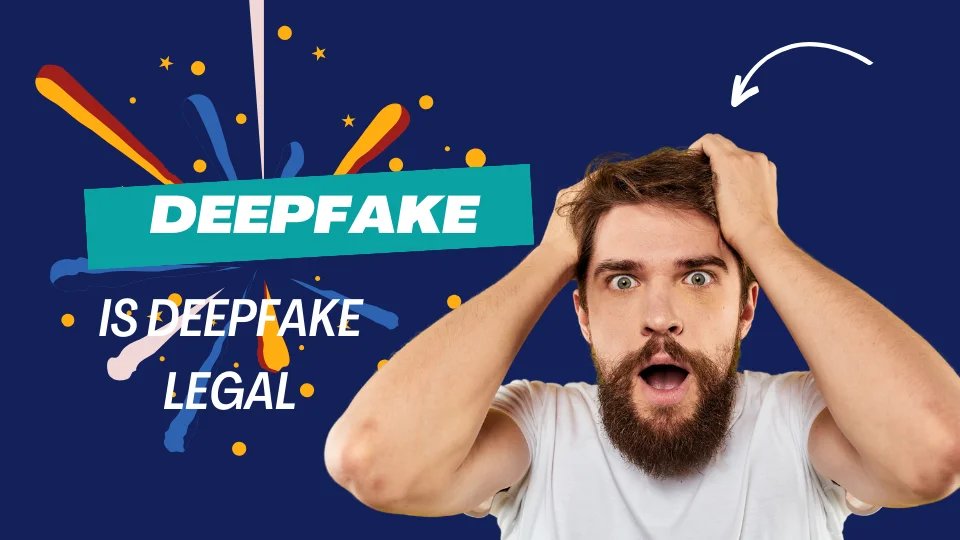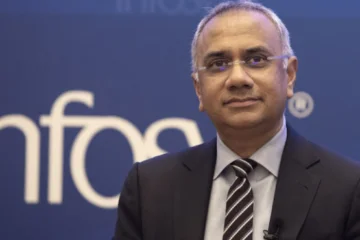What is Deepfake AI

What is Deepfake AI. Deepfake AI refers to the use of advanced artificial intelligence techniques, particularly deep learning, to create highly realistic and often deceptive multimedia content, such as videos, audio recordings, or images. The term “deepfake” is derived from “deep learning” and “fake.” Deep learning involves the use of neural networks with multiple layers (deep neural networks) to analyze and learn patterns from vast amounts of data.
In the context of deepfake AI, these neural networks are trained on large datasets of images or videos featuring a target person. Once trained, the model can generate new content that convincingly imitates the target’s appearance, voice, and mannerisms. The technology has raised concerns due to its potential for malicious use, as it can be employed to create fabricated content that appears authentic.
Deepfake AI relies on generative adversarial networks (GANs), a type of neural network architecture. GANs consist of two components – a generator and a discriminator – which are trained in a competitive manner. The generator creates synthetic content, while the discriminator evaluates the authenticity of that content. Through iterative training, the generator improves its ability to produce increasingly realistic deepfakes.
While deepfake technology has legitimate applications in fields like entertainment and filmmaking, its misuse has led to growing ethical and security concerns. Deepfakes can be utilized for malicious activities, such as spreading misinformation, creating fake news, or even impersonating individuals in compromising situations.
Efforts to combat the negative implications of deepfake AI include the development of detection tools and increased awareness about the existence of such technology. As technology evolves, the cat-and-mouse game between creators of deepfakes and those developing countermeasures continues. Policymakers, researchers, and tech companies are working together to address the ethical and societal challenges associated with the widespread use of deepfake AI. Is deepfake legal in India
Deepfake AI has been used in various contexts, ranging from entertainment to more concerning instances of misinformation and impersonation. Here are some notable examples:
- Entertainment Industry:
- Deepfake technology has been employed in the entertainment industry for tasks such as digitally resurrecting deceased actors or altering performances. For instance, a deepfake was used to portray a young version of actor Carrie Fisher’s character in the movie “Rogue One: A Star Wars Story.” Is deepfake legal in India
- Impersonation:
- Deepfake AI has been utilized to create videos where individuals appear to say or do things they never did. A notable example involves a deepfake of former President Barack Obama, where the AI was used to manipulate his facial expressions and voice to create a fabricated public service announcement.
- Political Manipulation:
- Deepfake technology raises concerns about its potential impact on politics. There have been instances of deepfakes targeting political figures, manipulating speeches, or creating fake videos that could influence public opinion.
- Adult Content:
- Deepfake AI has been misused to create non-consensual explicit content by superimposing the faces of celebrities or unsuspecting individuals onto adult videos. This has raised significant ethical and privacy concerns.
- Voice Cloning:
- Beyond visual deepfakes, AI has been used to clone voices convincingly. By training on a person’s voice recordings, deep learning models can generate synthetic audio that closely mimics the speaker. This can potentially be used for fraudulent activities, such as voice phishing or creating fake audio messages.
- Fake News and Misinformation:
- Deepfake technology can be employed to generate realistic news reports or interviews, contributing to the spread of fake news and misinformation. This poses challenges for media outlets and the public in verifying the authenticity of content.
These examples highlight both the potential benefits and risks associated with deepfake AI, emphasizing the need for responsible use, awareness, and the development of countermeasures to mitigate potential harm.
What are the threats of deepfake technology?
Deepfake technology comes with several threats that can affect people and society. Here are some simple explanations with examples: Is deepfake legal in India
- Misleading Information:
- Threat: Deepfakes can be used to create videos that make it look like someone is saying or doing something they never did.
- Example: A deepfake video could show a celebrity endorsing a product they never actually supported, leading people to believe false information.
- Fake News:
- Threat: Deepfakes can be used to create realistic-looking news reports or interviews that never happened.
- Example: A fake video might claim a political leader said something damaging, causing confusion and spreading false information. Is deepfakes safe?
- Identity Theft:
- Threat: Deepfakes can be used to impersonate individuals, making it seem like they are doing things they never did.
- Example: Someone could use a deepfake to make it look like you said something offensive or inappropriate, causing harm to your reputation.
- Privacy Invasion:
- Threat: Deepfake technology can be misused to create fake explicit content featuring someone’s likeness without their consent.
- Example: A deepfake could put a person’s face on an adult video, causing embarrassment and harm to their personal life.
- Political Manipulation:
- Threat: Deepfakes can be used to manipulate political events by creating fake videos of leaders saying or doing things to sway public opinion.
- Example: A deepfake video of a politician making false promises could influence voters in an election.
- Security Risks:
- Threat: Deepfake technology can be exploited to create fake audio or video messages for malicious purposes.
- Example: A scammer might use a deepfake of your friend’s voice to trick you into revealing sensitive information over the phone. What is deepfake ai
In summary, deepfake technology poses risks of spreading false information, damaging reputations, invading privacy, manipulating political scenarios, and facilitating fraudulent activities. Being aware of these threats is important to ensure responsible use and to develop ways to detect and prevent potential harm.
Is Deepfake legal in India
Is deepfakes safe? The increasing use of deepfake technology has led to concerns about the need for stronger legal rules in India. Deepfakes involve using computer programs to create fake images, videos, or audio that seem real but are actually fabricated. This poses challenges for privacy, data protection, and cybercrime, and existing laws in India may not be sufficient to address these unique issues. Is deepfake legal in India
One major challenge is the absence of a clear legal definition for deepfake technology and related offenses. Without a precise understanding of what constitutes a deepfake, it becomes challenging to enforce the law and discourage malicious activities. An example of such malicious use was highlighted when an Australian woman successfully sued someone who had manipulated her image into explicit content.
In India, existing laws like Section 66E of the IT Act of 2000 can be applied to deepfake crimes that involve capturing, publishing, or transmitting someone’s images, leading to privacy violations. Offenders may face imprisonment or fines. Section 66D of the same Act allows prosecution of individuals using communication devices or computer resources with malicious intent, resulting in imprisonment or fines. These laws can be used to address deepfake cybercrimes. What is deepfake ai
The Indian Copyright Act of 1957 also offers protection against deepfakes by penalizing the unauthorized use of copyrighted works. Copyright owners can take legal action against those infringing upon their rights. Furthermore, government initiatives, like an advisory from the Ministry of Information and Broadcasting, urge media organizations to exercise caution when airing possibly manipulated content and to label it as “manipulated” or “modified.”
Although India currently lacks specific laws targeting deepfakes, existing legal provisions and government advisories can be used to address the issue. As deepfake technology evolves, it is anticipated that the Indian government may take additional measures to safeguard individuals from potential harm. Is deepfakes safe?
Deepfake Studio – Apps on Google Play
AI is the Future with futureaitips.co.in
- What is Deepfake AI | Is Deepfake legal in India

- How AI can helpful at Ram Mandir Ayodhya Safety on January 22, 2024

- How Infosys loses $1.5 billion AI contract from global customer

- What is RAG Model ? How does rag work ? Future of Technology

- What is LLM large language model | Important LLM’s in 2023

- What happens if you go on the dark web | Is dark web illegal in India 2023?











0 Comments